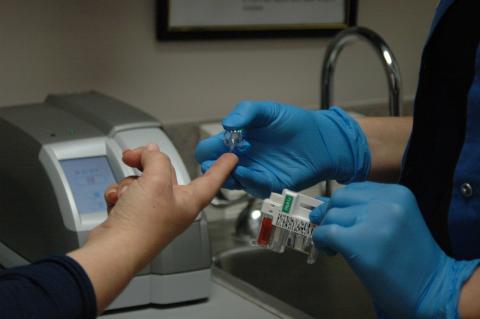Why are diabetes rates in southeast Ohio twice the national average?

Listen to this Episode
The diabetes rate in southeast Ohio is more than double the national average. Nearly 20% of the region’s adults have the chronic disease.
New research is providing insight about why.
Ohio University medical student Samuel Borgemenke and assistant professor Allyson Hughes examined the relationship between six “social determinants of health” and the prevalence of diabetes.
“Social determinants of health are just different factors that can impact one's well-being without necessarily being the typical hospital or health care system,” Borgemenke said.
Factors like safe housing, steady income and literacy skills are all social determinants, and can have significant impacts on someone’s health.
Counties in Appalachian Ohio tend to be worse off in these categories. The pair’s research found the area has significantly more children living in poverty, higher rates of food insecurity, lower numbers of primary care physicians, and more uninsured and poor people.
But they found three of those social determinants are more closely correlated to the region’s high diabetes rates: child poverty, food insecurity and socioeconomic status.
"Being in Appalachia, being in coal mining country, there's a lot of generational trauma that really seems to have impacted this area."
Allyson Hughes, Ohio University assistant professor
In some ways, that’s not surprising, Borgemenke said.
“Especially for Type 2 diabetes, food insecurity and economic status, having access to healthy food and the ability to exercise, are all things I would assume are closely related to diabetes rates.”
But there’s more to the story.
People have a higher risk of developing diabetes if they have a family member who has it.
And people who live through traumatic events can have offspring up to three times more likely to develop the disease, said Hughes in a press release.
“Being in Appalachia, being in coal mining country, there's a lot of generational trauma that really seems to have impacted this area,” she said. “So once you add in the social determinants of health, I would say there’s even more of an increase because it’s just the perfect storm.”
Hughes and Borgemenke hope better understanding the underlying factors that contribute to high diabetes rates can help health providers better serve people in southeast Ohio.
Hughes suggested interventions like checking glucose levels earlier than usual if doctors know someone experienced poverty or food insecurity as a child.
“Think about a safety net program,” she said. “What can we do to make things better?”
This study shows addressing child poverty and food deserts could make a difference.
“And that would benefit more conditions than just diabetes,” she said.
9(MDYwODMwNTczMDE2ODk5NTExNDAyNzM5Ng000))
- Home
- Schedules
- TV
- TV
- Local TV Programs
- Business | Life 360 with Kristi K.
- Toledo Stories
- To The Point with Doni Miller
- Listening with Keith Burris
- Ideas & Insights
- WGTE Presents
- BL360: Northwest Ohio Innovation Consortium
- Magic of the Old West End
- Freedom Means Never Surrender
- I&I: The Random Factor
- FF: National Cherry Festival
- TTP: Moms Demand Action For Gun Sense in America
- Watch Live
- Radio
- Education
- Community
- Support
- About
- Donate
- Watch Live


